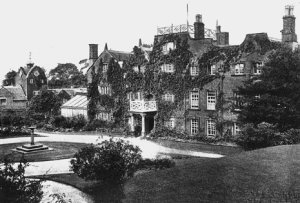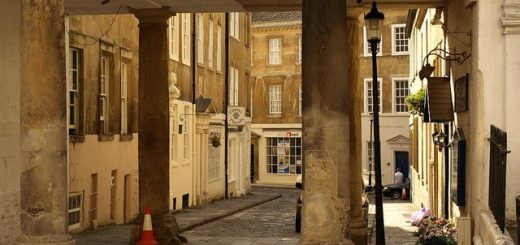St Mary’s Bleeding Gravestone
St Mary’s Church is the last resting place of Richard Smith who was killed on 12th April 1727, aged 20 years old. A recruiting sergeant for the army had come to Hinckley and was informing a crowd of potential new soldiers about the virtues of taking the King’s shilling, when Richard started barracking him, making jokes and quips. The sergeant lost his temper and when Richard would not stop with his comments, the soldier gave the crowd a demonstration in how to use a pike in close quarter combat and killed Richard on the spot.
![St Marys Church Hinckley [CC BY-SA 3.0 (https://creativecommons.org/licenses/by-sa/3.0)], from Wikimedia Commons](http://www.mysteriousbritain.co.uk/wp/wp-content/uploads/2018/12/St_Marys_Church_Hinckley_Leicestershire_01-230x300.jpg) Upon Richards gravestone is the following inscription; ‘A fatal Halbert his mortal Body slew, The murdering Hand God’s vengeance will pursue From shades Terrestrial, though Justice took her flight Shall not the judge of all the Earth do right Each Age and Sex his Innocence bemoans And with sad sighs laments his dying Groans’.
Upon Richards gravestone is the following inscription; ‘A fatal Halbert his mortal Body slew, The murdering Hand God’s vengeance will pursue From shades Terrestrial, though Justice took her flight Shall not the judge of all the Earth do right Each Age and Sex his Innocence bemoans And with sad sighs laments his dying Groans’.
According to tradition the gravestone is said to ‘sweat blood’ on the anniversary of Richards murder. A suggestion was made by F Bedford who researched the church and authored a guide in 1936. The gravestone used to be positioned under a block of red sandstone at the Chancel’s East window and it was thought that the ‘blood’ being sweated was actually a due to some sort of chemical action on water dripping from this block.




In Hinckley church there was, some years ago, and for all I know to the contrary there may be still, what was known as the Bloody Tomb. It derived its name on account of ‘gouts’ of liquid resembling, in colour, blood, which were frequently found on it. According to tradition, in the year 1727, Richard Smith, a young local man, had been struck down and killed by a recruiting sergeant in Duck-puddle for making a jest the sergeant resented, and ever afterwards drops of blood appeared periodically on his tomb. The villagers believed this was because the sergeant had suffered no punishment for the crime. [HAUNTED CHURCHES by ELLIOTT O’DONNELL (1939)]